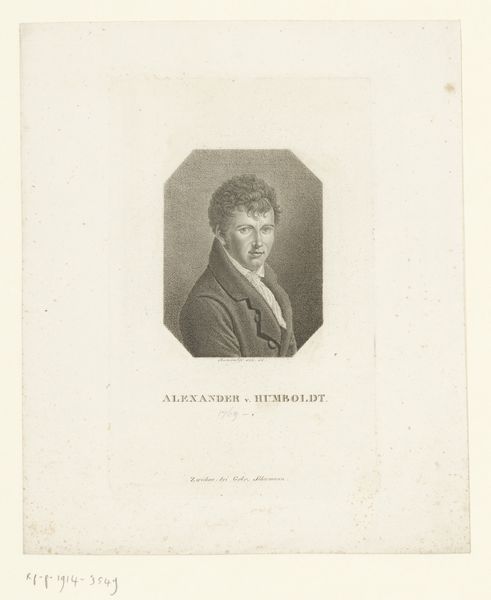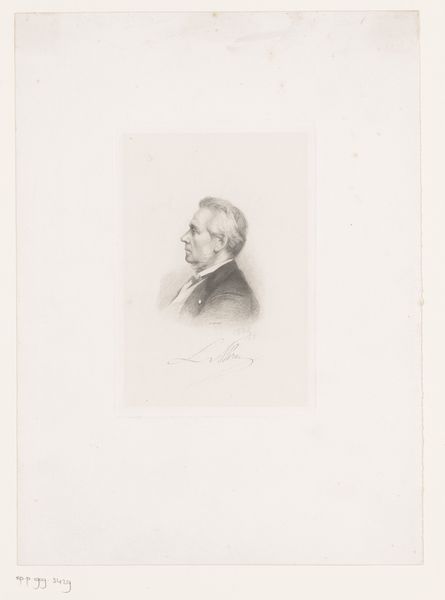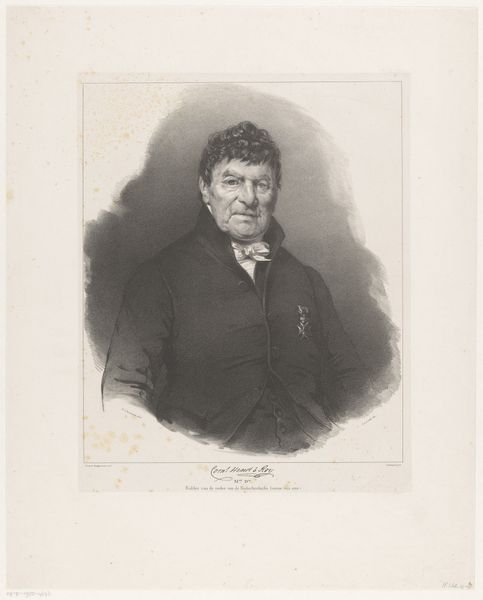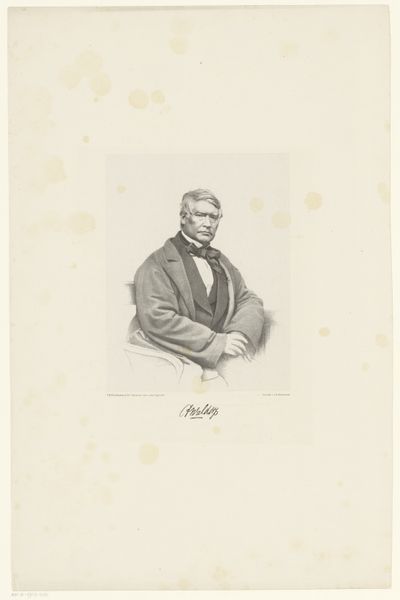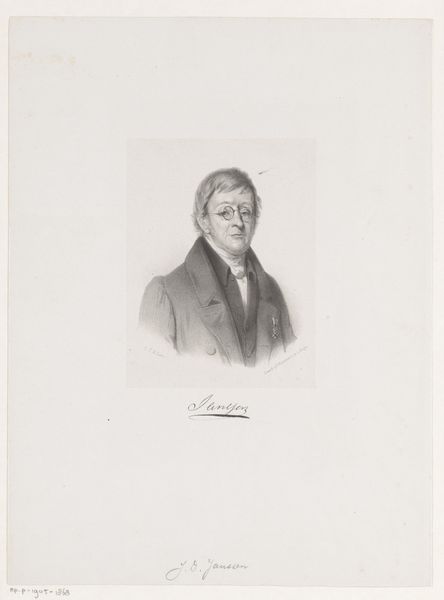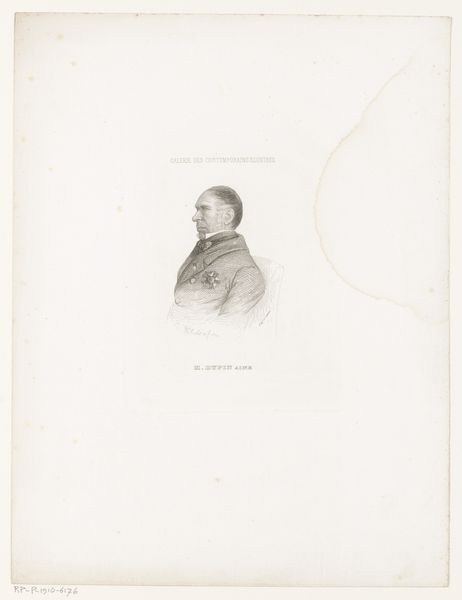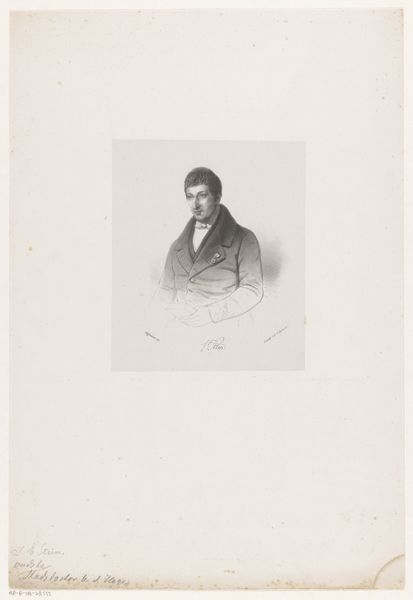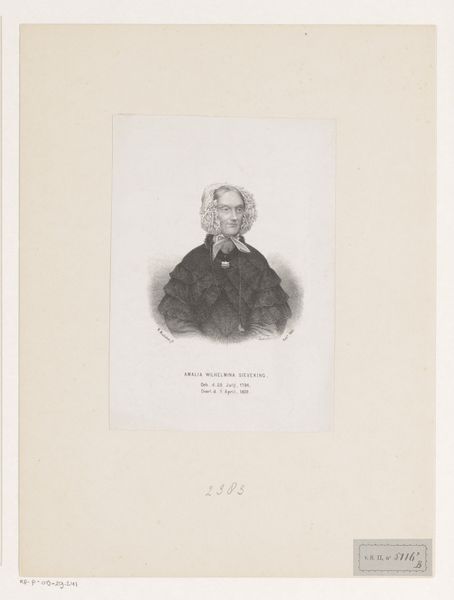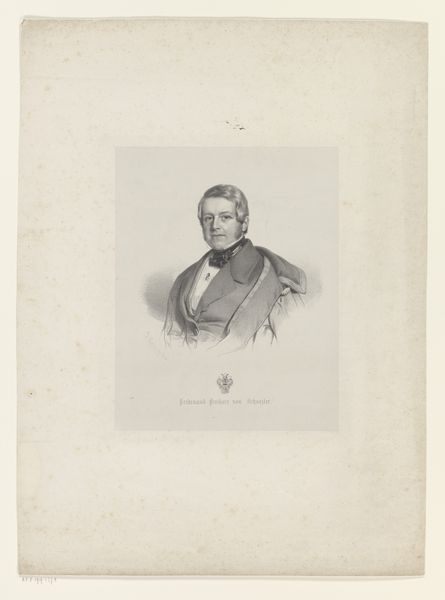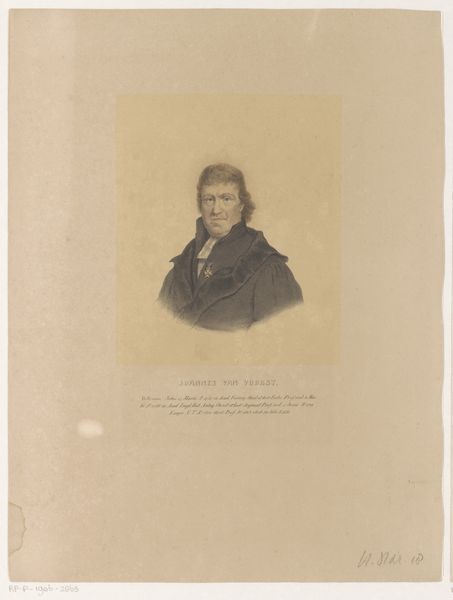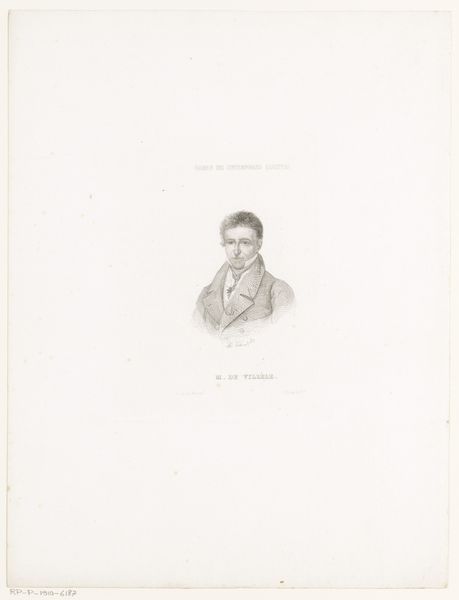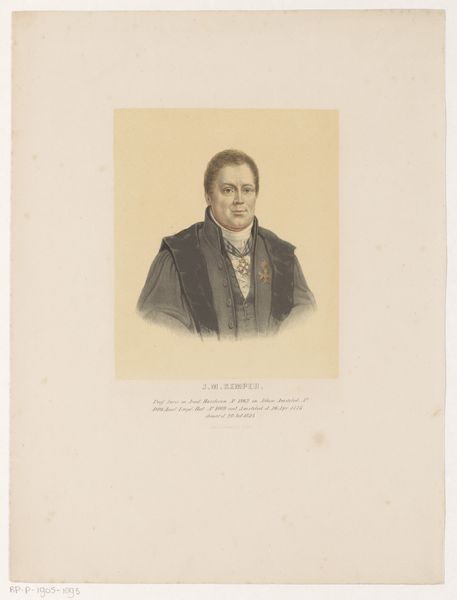
print, paper, engraving
#
portrait
# print
#
old engraving style
#
paper
#
historical photography
#
romanticism
#
engraving
#
realism
Dimensions: height 366 mm, width 306 mm
Copyright: Rijks Museum: Open Domain
Curator: Here we have an engraving titled "Portret van Willem Anne van Haren," dating from 1833 to 1842. Editor: The overall impression is one of gravity and almost somberness. The man’s expression conveys a weight of responsibility, perhaps even a touch of weariness. Curator: Indeed. As a portrait, it speaks to the Romantic era’s fascination with the individual and their inner life. Willem Anne van Haren's portrayal is rendered in incredible detail through the medium of engraving, capturing not just likeness but a sense of his character, reflecting the subject's gravitas in the historical period. Editor: Looking at this print through a contemporary lens, I'm curious about the power dynamics inherent in portraiture of this period. Willem Anne van Haren held notable positions and came from privilege. To me, this visual representation seems deliberately constructed to project authority and project his status. Curator: That's astute. Engravings, while more accessible than painted portraits, still functioned as symbols of status, a way to disseminate images of prominent figures throughout society. Editor: Considering how Romanticism coincided with developing print media, that means access for broader, although not unlimited, viewing becomes a relevant conversation here, democratizing access to the elite's image through reproduction even if material circumstances remained starkly divided in the era. Curator: I hadn’t quite framed it that way. The proliferation of this print allowed Willem Anne van Haren’s image, and by extension, his values, to permeate further. Editor: It's fascinating to trace those reverberations into our contemporary image culture, as portraiture evolves, expands, and, at its best, disrupts. Curator: A powerful thought! Considering this portrait through your lens enriches its cultural significance considerably. Thank you. Editor: It reminds us that images always circulate within networks of power and that historical understanding requires us to grapple with the circumstances under which these powerful images appeared.
Comments
No comments
Be the first to comment and join the conversation on the ultimate creative platform.
